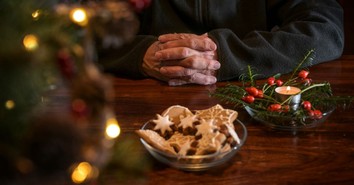10 Tips for Traveling with Teens

I love traveling with teenagers. Perhaps I’m just weird, or perhaps it is the fact that the teenagers I travel with are not typical. Whatever it is, I love traveling with teenagers.
I’m currently planning the fourth trip for our homeschooled high school student tutorial (the Francis Schaeffer Study Center in Mt. Juliet, TN) to Washington DC for this March, and our third trip to Italy and Germany this coming December/January. Our DC trips average about 20 students and four adult chaperones. Our Europe trips average about 20 students and 10-12 parents/chaperones.
Why travel? For me, there are two compelling reasons. First, the past comes alive when you visit a historic location or see a historical painting or object. Pictures in books don’t do justice to reality. Seeing the David or a Da Vinci or a Van Gogh is dramatically different from seeing a picture of them in a book. Second, I love to travel with others to share the experience—and especially I love traveling with teenagers and watching their eyes light up as they see and experience the deeper reality.
Now, I know that traveling with teenagers can go terribly wrong, and I’ve heard the horror stories. So here are ten tips for travelling successfully.
1. Travel with a purpose. Travel is expensive. You have a limited amount of time. Use it for a purpose. When we go to DC, our resolve is to make every minute of every day count. Our focus is to supplement the studies we are doing in western civilization and biblical worldview. The cornerstones of the trip are the National Gallery of Art, the National Cathedral, and Arlington Cemetery. The other museums are delightful bonuses—especially for me, I will admit, the Air and Space Museum—but our focus is to spend some quality time with the core destinations. Around them we will also work in a brunch with our senators, a trip to the National Zoo, and some free time on the Mall (hint: not a shopping center!)—more about that later.
When I go to Europe, we don’t try to see everything or go everywhere. We focus on the Renaissance in Italy (with a nod to Classical Rome) and on the Reformation in Germany. There’s more than enough to do just tracing Martin’s Luther’s steps for a week.
At some point, I hope to fulfill my dream of leading Civil War battlefield tours to Shiloh, Chickamauga, and Kennesaw.
2. Do the research ahead of time and have a plan. I spend a lot of time researching destinations, museums and events. Before the internet, I read lots of guide books. Now I surf. I especially read reviews by other travelers. They can help you decide what the pros and cons of various destinations and accommodations are. You also need to familiarize yourself with the geography of your destination. Contact museums, theaters, and restaurants ahead of time and ask about group rates, group tours, and group discounts.
Study maps. If you’re not good with maps, you need to spend some time developing that skill. Your teens will be looking to you for answers. You want to be prepared to give them.
3. Schedule free time in the afternoons. It’s OK to keep teens busy. But you also have to allow them to make choices on their own. It is always safer to do that during the day than after dark. We usually define both an area for their free time and possible options, and the minimum size group that must stay together. We have a definite time and place to rendezvous before supper. I need to know the groups and their approximate plans before we break. I encourage the adults and chaperones to choose a destination that they are interested in and invite a group to join them. I always tell the teens where I will be going and invite them to come along. This works in DC as well as in Europe.
4. Plan evening activities. The teen travel war stories almost all have a common element. Teens making bad choices in the evenings, either in a hotel or breaking away from the group. Give them free time in the afternoon, rendezvous for dinner, and then plan a group activity in the evening. When we’re in Europe, this may be a play, a concert, or an evening walking tour. Our most adventurous evening is attending the New Year’s Eve celebrations in the Mozartplatz in Salzburg, Austria. But we do it as a group and everyone is accounted for—at frequent intervals. When we’re in DC for five nights, we will plan an activity for each night. On three nights, we’re going to the theater—Shakespeare if I can find it. And then some fun shows as well. In DC, it is our tradition to attend Shear Madness at the Kennedy Center. It’s the American Mousetrap, the longest running play (11,000+ performances) in North America. On the nights when we’re not doing theater, we do an outdoor walking tour. One night, I will do the assassination of Abraham Lincoln. We start at Ford’s Theater and walk to the backstage door where Booth arranged for his horse to be kept waiting, and we end at the White House and Lafayette Park where the house of Secretary of State William Seward stood (he narrowly escaped assassination by one of Booth’s accomplices that night). On another night, we’ll walk around the monument end of the Mall, visiting the World War II Memorial, the Vietnam Memorial, the Korean War Memorial, and the Lincoln Memorial. They make a different impression at night, and there are some impressive views of the Capitol and city looking back from the steps of the Lincoln. Arrange your evenings so that when you return to the hotel, the teens are ready for bed and sleep. Make sure all your rooms are contiguous and well-chaperoned. And suggest that, since tomorrow will be busy, lights out and sleep is highly recommended.
5. Use food courts. This gives everybody a chance to get what they want to eat…or, closer to what they want. Teens do better when they have choices and don’t feel quite so regimented. Some food courts will help you arrange for food vouchers and sometimes there’s a discount.
6. Tell the students ahead of time what the plan is. This helps them prepare. They might even do some reading on their own. If possible, distribute the plan well in advance of the trip, but certainly on the day of departure. Have copies available for parents at departure. And have extra copies with you.
7. Make sure you have a roster, with emergency phone numbers, cell phone numbers, insurance information, and a backup plan. Give parents your contact information for each day of the trip when you depart.
8. Be easy to find all the time. I get kidded a lot about my red hat, but it is one of the most practical purchases I’ve ever made. Students can find me quickly and it helps them keep up. When I raise the red hat and wave it, it’s a signal for everybody to come join me—either because I have things to say, or because we’re about to move out. Some tour leaders use an umbrella or a fiberglass pole with an orange flag. Me? I like the red hat. Even the clothes you wear can help you out as the group leader. Pick bright colors. If you’re traveling in the winter, go for a green or a red coat. It seems like a small thing, but it can be enormously helpful.
9. Recruit good help and invite the parents to come along. I would never attempt to lead a group of 20 by myself. Ideal would be one adult for every three teens. One for every five or six is still doable. Brief your chaperones well ahead of time on the plans and the purpose. One reason I like homeschooling families is that the teens and adults are used to talking to each other. Some of the richest experiences are when teens and parents are learning together.
10. Be flexible and be fun. Things won’t always go exactly the way you plan. The weather won’t always cooperate. Sometimes a key attraction may be unexpectedly closed. Take advantage of your surroundings. Explore on foot. Find a café as a refuge from the weather. Encourage games and singing.
God has blessed us with incredible opportunities. He wants us to remember and celebrate the things he has done. The Bible is full of accounts where monuments were erected to “mark the spot.” Travel helps us understand and remember. Remembering and understanding lead us to God.
Soli Deo Gloria!
Robert G. Shearer is the husband of Cyndy Shearer, the proud father of 11 children, an Elder at Abundant Life Church, Director of the Francis Schaeffer Study Center, Publisher of Greenleaf Press, vice president of the Tennessee Association of Church-Related Schools. He has been a college professor, a marketing VP, a demographer, a healthcare planner, a publisher, an author, and a small business owner. Rob holds an MA in History and Humanities from Stanford University and an A.B. in History from Davidson College. He was a Fulbright Scholar in Germany in 1979-1980. He is the author of Famous Men of the Renaissance and Reformation, and Famous Men of the 16th & 17th Century.
© 2013 by Home Educating Family Association. All rights reserved. Used with permission. Originally published in 2013 Issue 1 of Home Educating Family Magazine, the publication with the most meaningful discussions taking place in the homeschooling community today. Visit hedua.com to read back issues and for more articles, product reviews, and media.
Publication date: August 27, 2014
Originally published May 29, 2019.







